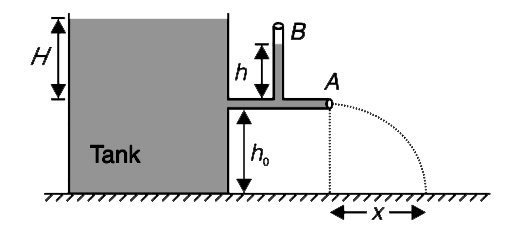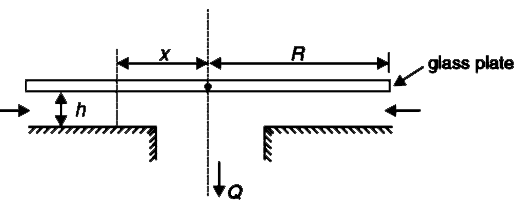Asserion : Long distance flows of photoassimilates in plants occurs through seive tubes
Reason : Mature seive tubes have parietal cytoplasm and prforated seive plates
If the both assertion and reason are true and the reason is the correct explanation of the assertion
If both assertion and reason are true and the reason is not the correct explanation of the assertion
If assertion is true but reason is false
If both assertion and reason are false statements.
The correct Answer is:A
The main function of sieve tube is the transport of blood products from greeen and storage organs of the plant to other organs of the plant. The seive elements are seive tubes arranged one above the other and have sieve plates (obligue or transverse perforated speta) on their end walls. The cytoplasm occur in the form of a thin living layer along the inner side of cellulose wall. The nucleus disappears in mature sieve elements.
Similar Questions
Assertion : long distance flow of phtoassimilates in plants occurs through sieve tubes.
Reason: mature seive tubes have parietal cytoplasm
View SolutionAssertion : Water and mineral uptake by root hairs from the soil occurs through apoplast until it reaches edodermis.
Reason : Mature sieve tubes have parietal cytoplasm and perforated sieve plates.
View Solution
Knowledge Check
Asserion : Long distance flows of photoassimilates in plants occurs through seive tubes
Reason : Mature seive tubes have parietal cytoplasm and prforated seive platesAIf both A and R are true and R is the correct explanation of ABIf both A and R are true but R is not the correct explanation of ACIf A is true and R is falseDIf both A and R are falseAssertion (A): Seive tubes are made up of sieve plates that help in conduction.
Reason (R): Phloem parenchyma gives mechanical support.ABoth Assertion and Reason are true and Reason is the correct explanation for Assertion.BBoth Assertion and Reason are true, but Reason is not the correct explanation for Assertion.CAssertion is true and Reason is false.DAssertion is false and Reason is true.$ Seive tubes in plants are formed of enucleated cells called seive members.
! All the activities of a seive cell are controlled by nucleated parenchyma cells.AIf both As and R are correct and R is correct explanation of AsBIf both As and R are correct but R is not correct explanation of AsCIf As is correct, R is wrongDIf both As and R are wrong.
Identify the statements as true(T) or false(F).
A. Xylem fibres are the components of xylem in all categories of vascular plants.
B. Advanced angiosperm families like Winteraceae & Trochodendraceae do not have vessals.
C. Seive tubes & companion cells are ontogenetically related & are called sister cells.
D. The cytoplasm of a mature seive tube occurs in the form of a thin-living layer along the inner side of cell walls.
View SolutionTwo coaxial plane coils, each of n turns of radius a, are separated by a distance a. calcualte the magnetic field on the axis at the point midway between them when a current l flows in the same sense through each coil.
Electrons in a colou television tube are accelerated through a potential difference of 25 kV and then deflected by 45∘ in the magnetic field between the two coils described above. If a is 100 mm and the maximum current available for the coils is 2A, estimate the number of turns which the coils must have.
View Solution(i) In the arrangement shown in the figure, the tank has a large cross section and the pipes have much smaller cross section. The opening at A is unplugged and the water jet hits the ground surface at a horizontal distance x.

(a) Find the level of water (h) in the tube B as water flows out of A.
(b) Find x.
(i) A flat horizontal surface has a small hole at its centre . A circular glass plate of radius R is placed symmetrically above the hole with a small gap h remainng between the plate and the surface A liquid enters the gap symmetrically from all sides and after travelling radially through the gap finally exits from the hole. The volume flow rate of the liquid coming out from the hole is Q (in m3s−1).
(a) If the flow speed just inside the circumference of the circular plate is V0 and the speed (Vx) of flow inside the gap at distance x(see figure) from the centre of the hole.
(b) Write Vx in terms of Q, h and x.

View SolutionIn the second week of August 1998, just a few days after the incidents of bombing the US embassies in Nairobi and Dar- es-Salaam, a high-powered, brainstorming session was held near Washington D.C., to discuss various aspects of terrorism. The meeting was attended by ten of America’s leading experts in various fields such as germ and chemical warfare, public health, disease control and also by the doctors and the law-enforcing officers. Being asked to describe the horror of possible bio attack, one of the experts narrated the following gloomy scenario. A culprit in a crowded business centre or in a busy shopping mall of a town empties a test tube containing some fluid, which in turn creates an unseen cloud of germ of a dreaded disease like anthrax capable of inflicting a horrible death within 5 days on any one who inhales it. At first 500, or so victims feel that they have mild influenza which may recede after a day or two. Then the symptoms return again and their lungs start filling with fluid. They rush to local hospitals for treatment, but the panic-stricken people may find that the medicare services run quickly out of drugs due to excessive demand. But no one would be able to realise that a terrorist attack has occurred. One cannot deny the possibility that the germ involved would be of contagious variety capable of causing an epidemic. The meeting concluded that such attacks, apart from causing immediate human tragedy would have dire long-term effects on the political and social fabric of a country by way of ending people’s trust on the competence of the government. The experts also said that the bombs used in Kenya and Tanzania were of the old-fashioned variety and involved quantities of high explosives, but new terrorism will prove to be more deadly and probably more elusive than hijacking an aeroplane or a gelignite of previous decades. According to Bruce Hoffman, an American specialist on political violence, old terrorism generally had a specific manifesto - to overthrow a colonial power or the capitalist system and so on. These terrorists were not shy about planting a bomb or hijacking an aircraft and they set some limit to their brutality Killing so many innocent people might turn their natural supporters of Political terrorists want a lot of people watching but not a lot of people dead. “Old terrorism sought to change the world while the new sort is often practised by those who believe that the world has gone beyond redemption”, he added.Hoffman says, “New terrorism has no long-term agenda but is ruthless in its short-term intentions. It is often just a cacophonous cry of protest or an outburst of religious intolerance or a protest against the West in general and the US in particular. Its perpetrators may be religious fanatics or diehard opponent of a government and see no reason to show restraint. They are simply intent on inflicting the maximum amount of pain on the victim"
In the context of the passage, the culprit’s act of emptying a test tube containing some fluid can be classified as
View SolutionIn the second week of August 1998, just a few days after the incidents of bombing the US embassies in Nairobi and Dar- es-Salaam, a high-powered, brainstorming session was held near Washington D.C., to discuss various aspects of terrorism. The meeting was attended by ten of America’s leading experts in various fields such as germ and chemical warfare, public health, disease control and also by the doctors and the law-enforcing officers. Being asked to describe the horror of possible bio attack, one of the experts narrated the following gloomy scenario. A culprit in a crowded business centre or in a busy shopping mall of a town empties a test tube containing some fluid, which in turn creates an unseen cloud of germ of a dreaded disease like anthrax capable of inflicting a horrible death within 5 days on any one who inhales it. At first 500, or so victims feel that they have mild influenza which may recede after a day or two. Then the symptoms return again and their lungs start filling with fluid. They rush to local hospitals for treatment, but the panic-stricken people may find that the medicare services run quickly out of drugs due to excessive demand. But no one would be able to realise that a terrorist attack has occurred. One cannot deny the possibility that the germ involved would be of contagious variety capable of causing an epidemic. The meeting concluded that such attacks, apart from causing immediate human tragedy would have dire long-term effects on the political and social fabric of a country by way of ending people’s trust on the competence of the government. The experts also said that the bombs used in Kenya and Tanzania were of the old-fashioned variety and involved quantities of high explosives, but new terrorism will prove to be more deadly and probably more elusive than hijacking an aeroplane or a gelignite of previous decades. According to Bruce Hoffman, an American specialist on political violence, old terrorism generally had a specific manifesto - to overthrow a colonial power or the capitalist system and so on. These terrorists were not shy about planting a bomb or hijacking an aircraft and they set some limit to their brutality Killing so many innocent people might turn their natural supporters of Political terrorists want a lot of people watching but not a lot of people dead. “Old terrorism sought to change the world while the new sort is often practised by those who believe that the world has gone beyond redemption”, he added.Hoffman says, “New terrorism has no long-term agenda but is ruthless in its short-term intentions. It is often just a cacophonous cry of protest or an outburst of religious intolerance or a protest against the West in general and the US in particular. Its perpetrators may be religious fanatics or diehard opponent of a government and see no reason to show restraint. They are simply intent on inflicting the maximum amount of pain on the victim"
In what way would the new terrorism be different from that of the earlier years ?
More dangerous and less baffling
More hazardous for victims
Less complicated for terrorists
View Solution

